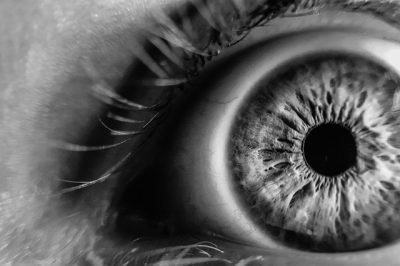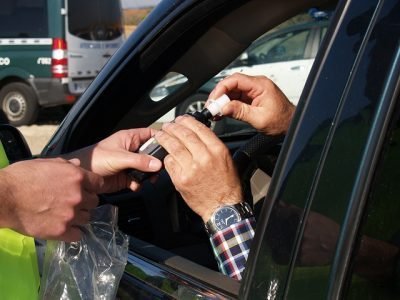Be it from a visit to the doctor’s or an episode of Grey’s Anatomy, you’ve probably come across a scene where a doctor or nurse whips out a trusty little penlight and sweeps it over the patient’s eyes. While penlights aren’t only exclusively used in the medical field, they are a staple that members of the profession will most likely be carrying with them at all times. In fact, it’s probably safe to say that penlights are as much a tool of the trade for members of the medical profession as stethoscopes, the typical symbol many of us tend to associate with doctors.
Why does one need a penlight, though, when regular flashlights exist? The answer is multi-fold, but an aspect of it is definitely the convenience. After all, the typical flashlight isn’t exactly your every day carry (EDC) item you can keep on your person, unless you’ve got one in the glove compartment of your car or hooked up in your garage or tool-box, or are a professional used to wearing a utility belt you can clip one to. Bigger and often a tad too bright for certain jobs, flashlights and tactical flashlights aren’t suited for jobs that require a little more portability and flexibility of use. Penlights offer just that.
What exactly is a penlight?
 As the name indicates, this miniature flashlight of sorts is lightweight and shaped a bit like a marker pen, with a metal or hard plastic body. Most include a clip that lets you slide it into the pocket of your shirt, lab coat or pants, to whip out at a moment’s notice, sometimes with a push button at one end to switch it on (also similar to styles of pens). This comes in handy when the light is used, for example, by doctors checking for signs of concussion or degree of brain function in a patient, shining a narrower and dimmer beam of light that won’t hurt the patient’s eyes as the bright glare of a regular flashlight would. This is a typical test used to work out, from the contraction of the pupils, the medical state of the patient and is often one of the first things a doctor or nurse will check, along with pulse, heartbeat etc., not only when someone is brought in after an accident but also as a typical check-up to test out your reflexes and reaction speeds.
As the name indicates, this miniature flashlight of sorts is lightweight and shaped a bit like a marker pen, with a metal or hard plastic body. Most include a clip that lets you slide it into the pocket of your shirt, lab coat or pants, to whip out at a moment’s notice, sometimes with a push button at one end to switch it on (also similar to styles of pens). This comes in handy when the light is used, for example, by doctors checking for signs of concussion or degree of brain function in a patient, shining a narrower and dimmer beam of light that won’t hurt the patient’s eyes as the bright glare of a regular flashlight would. This is a typical test used to work out, from the contraction of the pupils, the medical state of the patient and is often one of the first things a doctor or nurse will check, along with pulse, heartbeat etc., not only when someone is brought in after an accident but also as a typical check-up to test out your reflexes and reaction speeds.
 The same application is often used by police officers as well. A penlight is a much friendlier option when checking if an individual is under the influence when pulled up, and is a pretty good option to keep handy in your first-aid kits in the workplace and at home, too, since you’d be able to gauge early on if there is delayed or irregular reflexes and reactions so you don’t waste any time figuring out if you need professional medical assistance, also allowing you to skip the preamble if you do need to take the patient to a clinic or hospital.
The same application is often used by police officers as well. A penlight is a much friendlier option when checking if an individual is under the influence when pulled up, and is a pretty good option to keep handy in your first-aid kits in the workplace and at home, too, since you’d be able to gauge early on if there is delayed or irregular reflexes and reactions so you don’t waste any time figuring out if you need professional medical assistance, also allowing you to skip the preamble if you do need to take the patient to a clinic or hospital.
Different applications of penlights
 One key factor to keep in mind when it comes to penlights used in medical settings is the brightness. You need a penlight with the appropriately low lumens so as not to blind your patients. An ideal penlight for medical settings will start off on a low brightness setting that you can then amp up and adjust as you need to – this is a better alternative than going with an option which starts off at the brightest setting, since it’s human enough to forget about this and accidentally shine an incredibly bright light in the eye of a patient.
One key factor to keep in mind when it comes to penlights used in medical settings is the brightness. You need a penlight with the appropriately low lumens so as not to blind your patients. An ideal penlight for medical settings will start off on a low brightness setting that you can then amp up and adjust as you need to – this is a better alternative than going with an option which starts off at the brightest setting, since it’s human enough to forget about this and accidentally shine an incredibly bright light in the eye of a patient.
We nonetheless recommend a penlight with adjustable lighting, because checking pupil dilation and contraction aren’t their only medical application. Doctors and nurses also use penlights to shine down your throat if they are, for example, checking for infections or signs of inflamed tonsils, or to check wounds and bruises when the patient is brought in and before deciding on treatment. Penlights are also handy tools when you’re checking up on a snoozing patient, but don’t want to switch on the overhead lights or use anything brighter which might risk disrupting their sleep. The focused beam a penlight throws is enough for you to check the IV, examine bandages and essentially make sure everything is in the right, without disrupting the patient’s rest and recovery.
Again, portability is an important factor, since the penlight has to be lightweight and easy to carry about so it is ready for use on the go, but also has to be durable and ensure longevity of use.
Penlights are also handy tools to have for mechanics, who might need to get at hard to reach nooks and crannies difficult to illuminate with typical overhead lighting. Bulky head gear fitted with flashlights can be cumbersome or expensive, but penlights are a viable lightweight solution easy to use and accessible when needed. They also have plenty of daily applications, for instance fishing out something that rolled under your couch or in between your car seats, or getting at narrow nooks and crannies about your home as you clean or make repairs.
LED versus incandescent
Though available in both types, LED penlights have increasingly gotten more popular, being both energy-saving as well as offering better longevity than incandescent options. Some doctors and nurses prefer incandescent options because they’re milder on the eyes than LED penlights, as well as more accurate in color rendition to let you gauge visual indicators like discoloration of muscle or tissue to indicate symptoms of, for instance, jaundice. However, this again really depends on how you use them and which option you pick (color corrected LED penlights are available, as well as options with light dispersing extensions so the glare isn’t too intense on the eyes), and knowing whether the option you’ve picked delivers the appropriate lumens for the job. The good thing about LED penlights is that they will definitely last you longer and aren’t as damage-prone as incandescent options, so you get more work and application out of your batteries.